Hike beneath towering granite spires to the tallest peak east of the Rockies
Distance: 8.0 miles round trip (numerous routes of varying lengths possible)
Type: lollipop loop hike
Difficulty: moderate with ~1,500′ elevation gain
Best season: summer through early fall
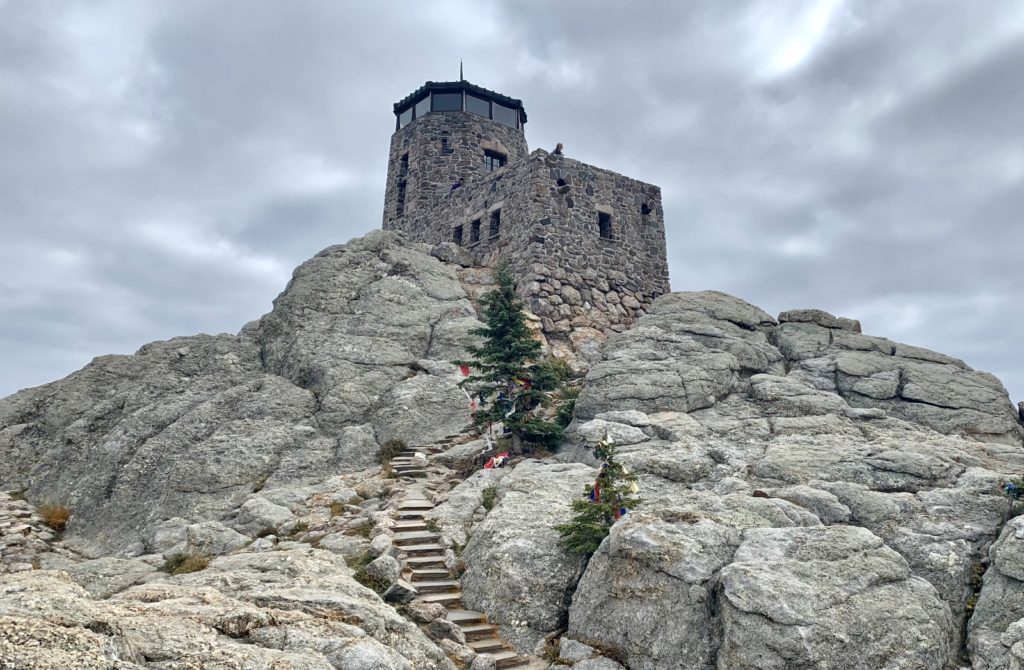
At 7,242 feet elevation, Black Elk Peak isn’t just South Dakota’s highest point. It’s the highest point between the Rocky Mountains and the Pyrenees Mountains in France. Surrounded by the beautiful Black Elk Wilderness in Custer State Park, the 360 degree views from the peak seem to extend forever. To the east is the backside of Mt. Rushmore, to the west the distinctive forms of Cathedral Spires and Little Devils Tower. On a clear day you can see the Badlands and neighboring states North Dakota, Wyoming, and Nebraska. It is easy to see why this was sacred land to the Lakota and other Plains tribes. We hiked to Black Elk Peak as fall colors were peaking in early October 2021. We enjoyed the hike so much, we returned the following week with friends who were visiting us from the Midwest. The photos here are a combination from both days and show the peak under varied conditions.

There are at least a dozen different ways to hike to Black Elk Peak. We began our hike at Sylvan Lake. We went up on Trail #9 and came back on Trail #4 to form a nice lollipop loop of 8.0 miles with roughly 1,500′ elevation gain. The majority of the elevation gain was accomplished over a continual climb up Trail #9, but there was also some gain as we climbed the saddle between Cathedral Spires and Little Devils Tower and then again as we approached Sylvan Lake on Trail #4.

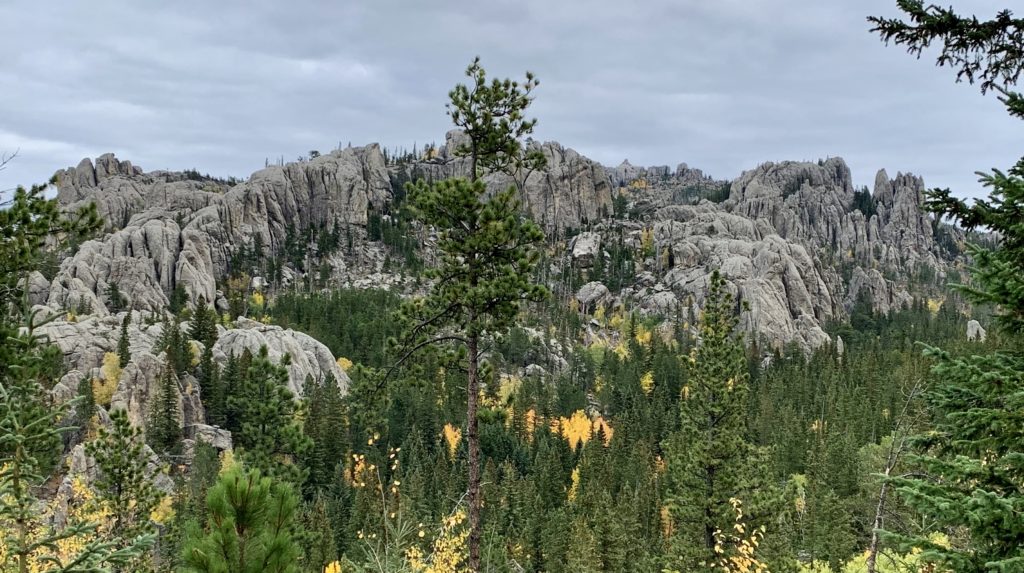

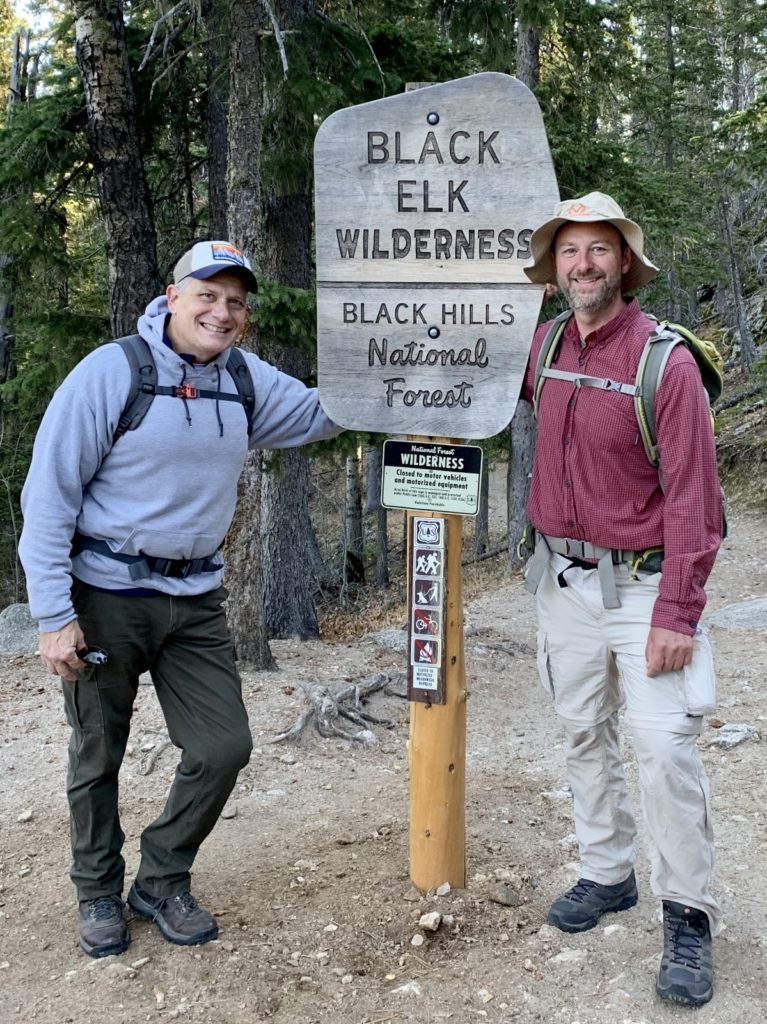
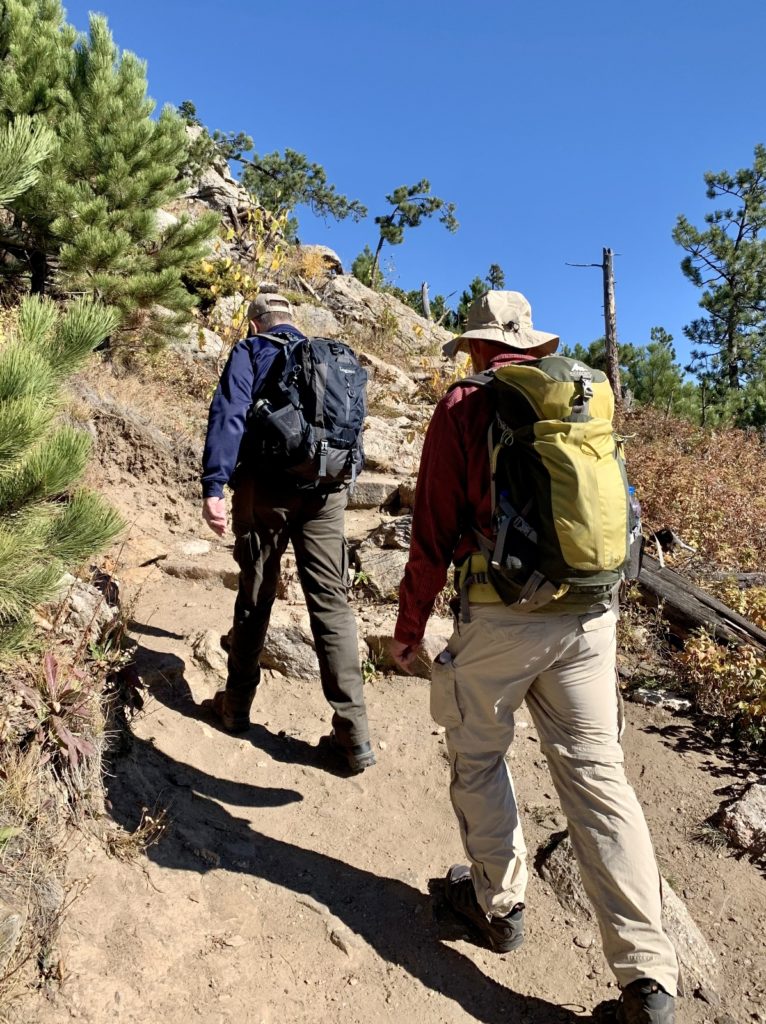
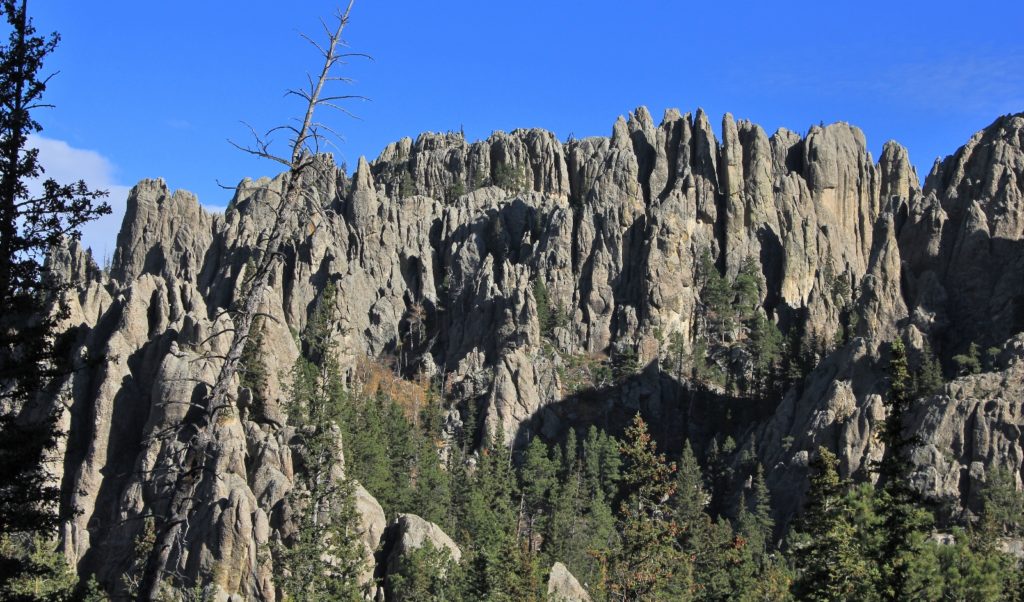


Both trails are very well maintained and all junctions well-signed. They have fantastic views of the area’s granite spires and, if you look up at the right time, occasional glimpses views up to Black Elk Peak. At times, the peak seemed an improbable distance away, but the jaw dropping scenery provided a good distraction as we huffed and puffed our way up the trail. The trail passes through predominantly ponderosa pine forest with some aspen groves which were a brilliant yellow during our visit.
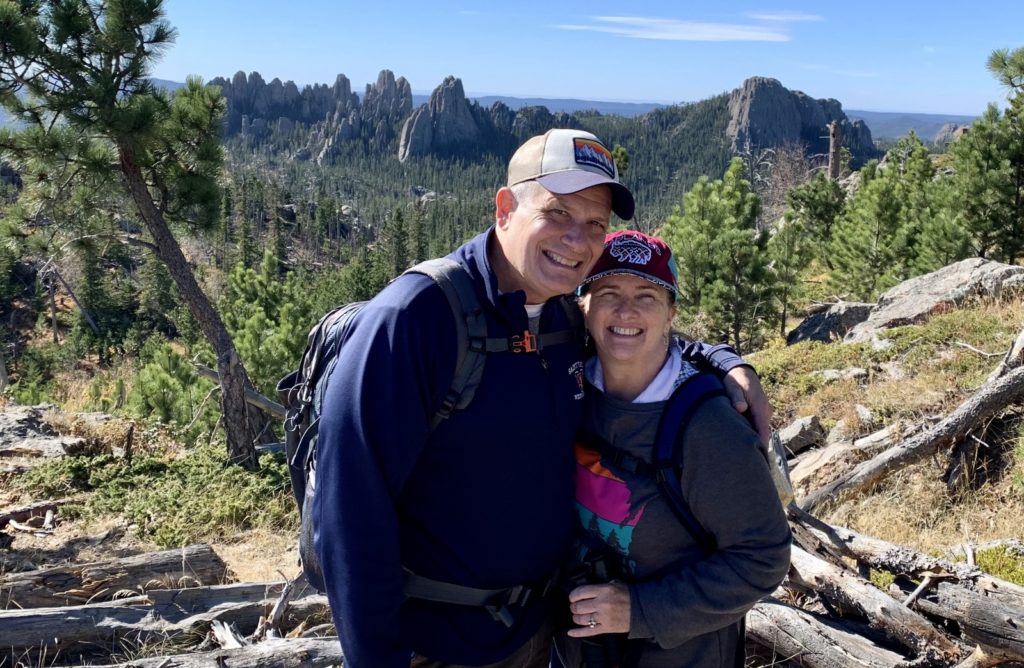
The hike to and from the peak was beautiful and a worthy adventure; however, the final ascent to the peak was one of the most spectacular sections of trail we have hiked to date. After climbing and climbing, we looked up to see the stone walls of the old lookout towering over us. The Civilian Conservation Corps constructed the lookout in 1939 and it served as a fire lookout until 1967. Once the lookout came into view, we still had some climbing to do. The trail passed under a couple boulders and then climbed a series of steep metal stairs though massive granite fins. Our final ascent was over rock stairs cut out by the CCC and then we found ourselves at the lookout. A wonder of skill and craftsmanship, the tower sits precariously perched atop Black Elk Peak. It blends so well with the natural environment around it, the lookout appears as though God himself placed it there during the creation of the Earth.
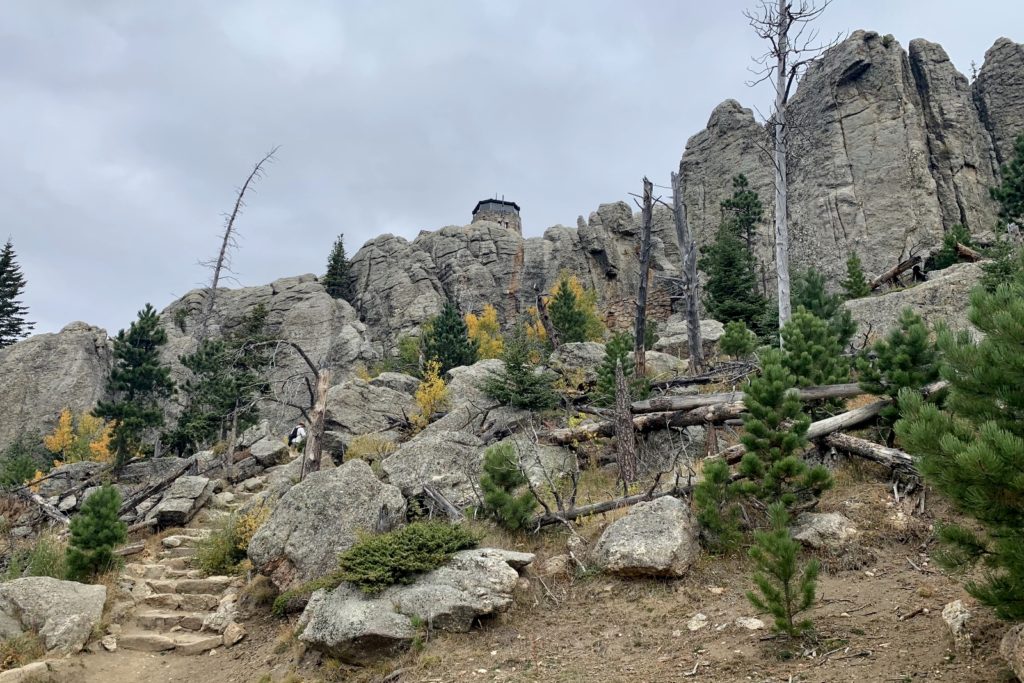
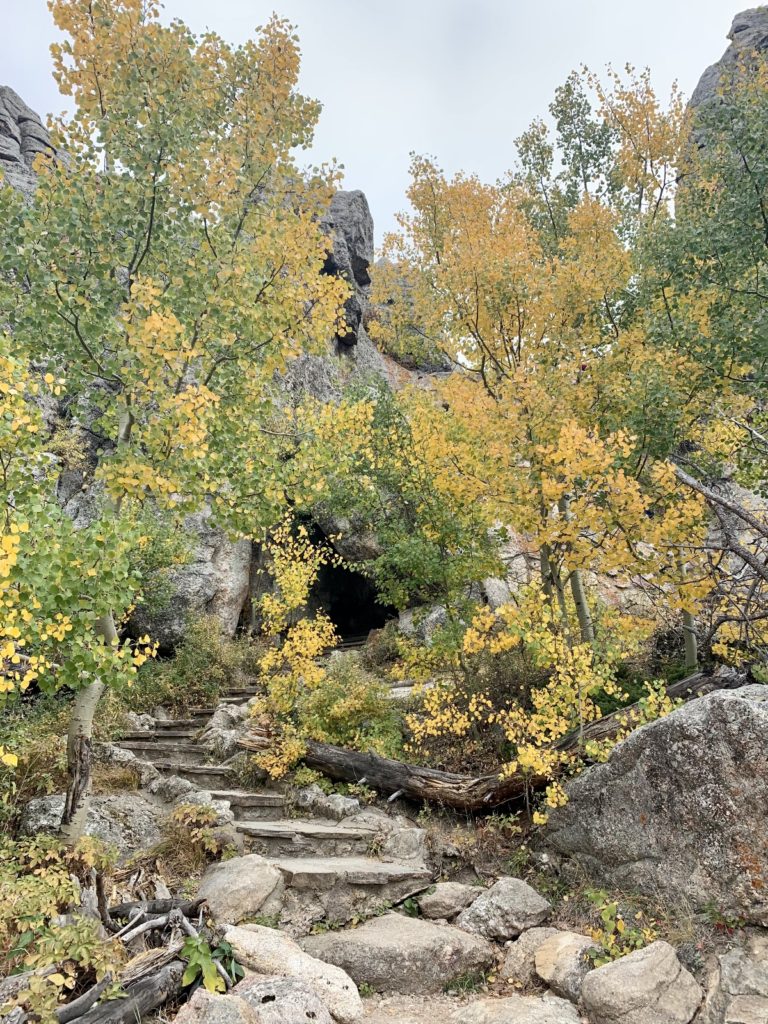
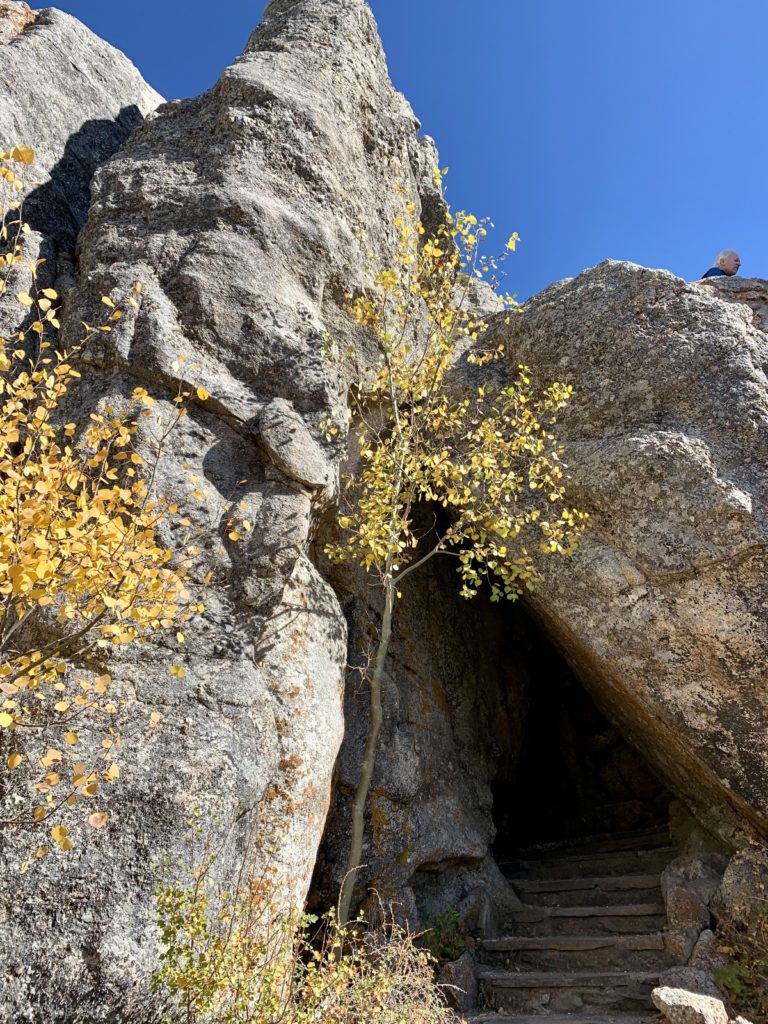
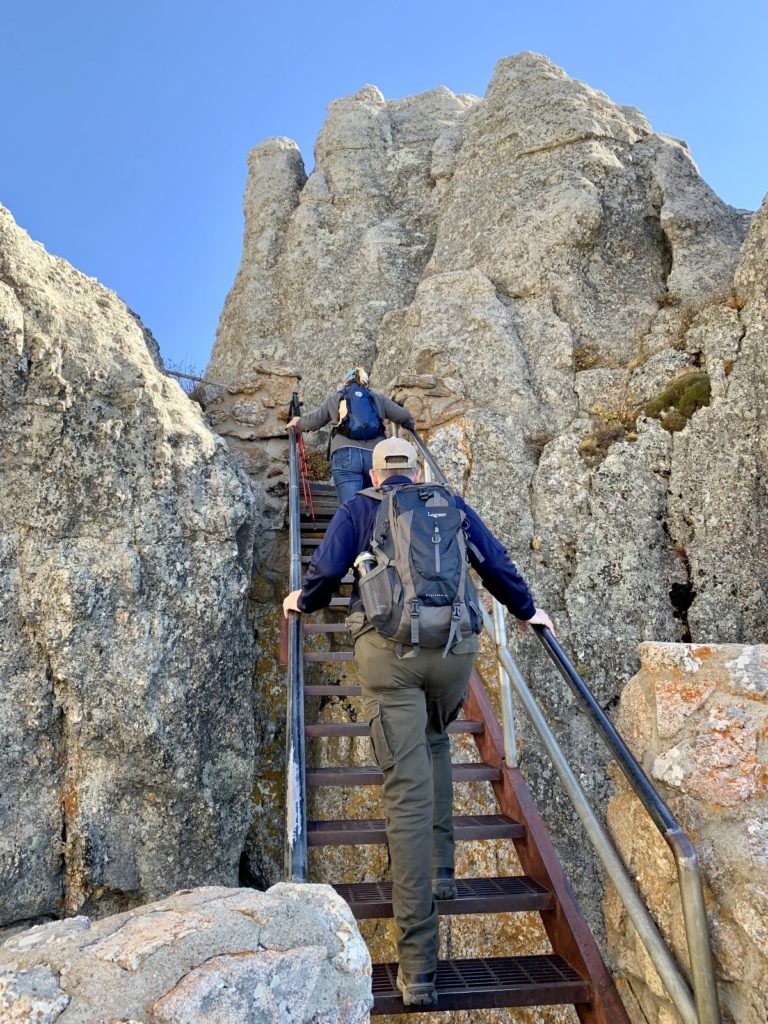
The lookout is open and the public is welcome to go inside. For those comfortable with heights, I highly recommend climbing to the top and peering out the windows. From the top or bottom, the lookout provides 360 degree views that won’t disappoint. Let the sacredness of this place sink in. Be sure to stop and pay your respects at one of the many prayer clothes that have been tied to the trees by American Indians. They are similar to ceremonial objects from other religions, and may represent a person making an offering, a request, or simply in remembrance of a person or place.
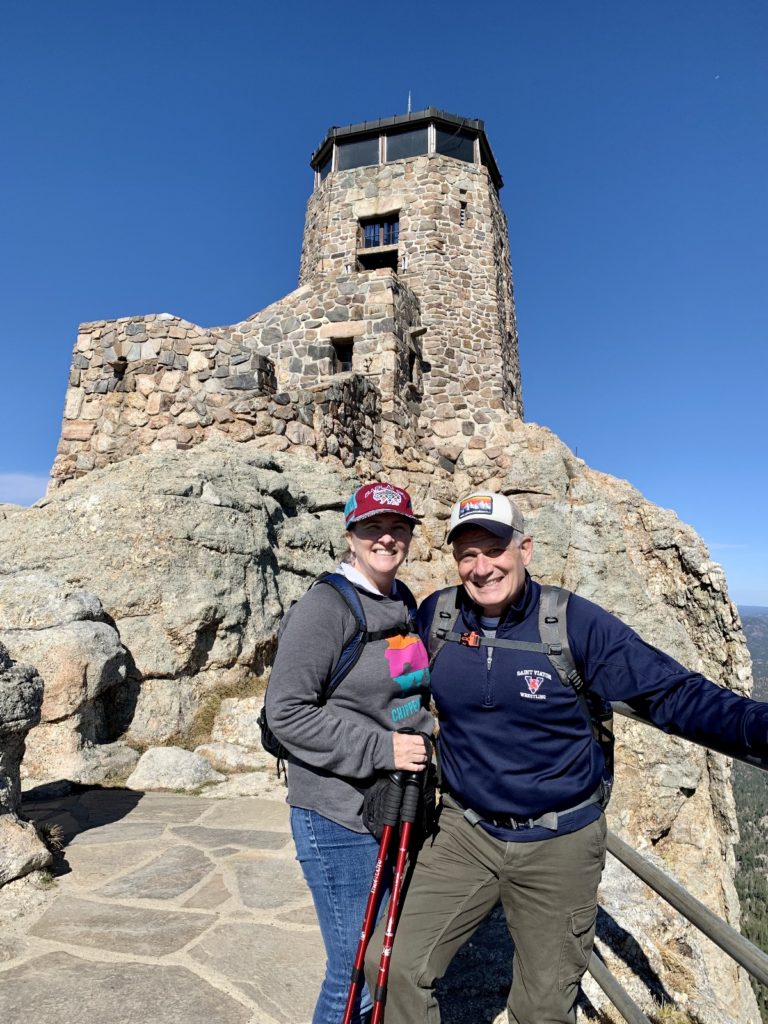
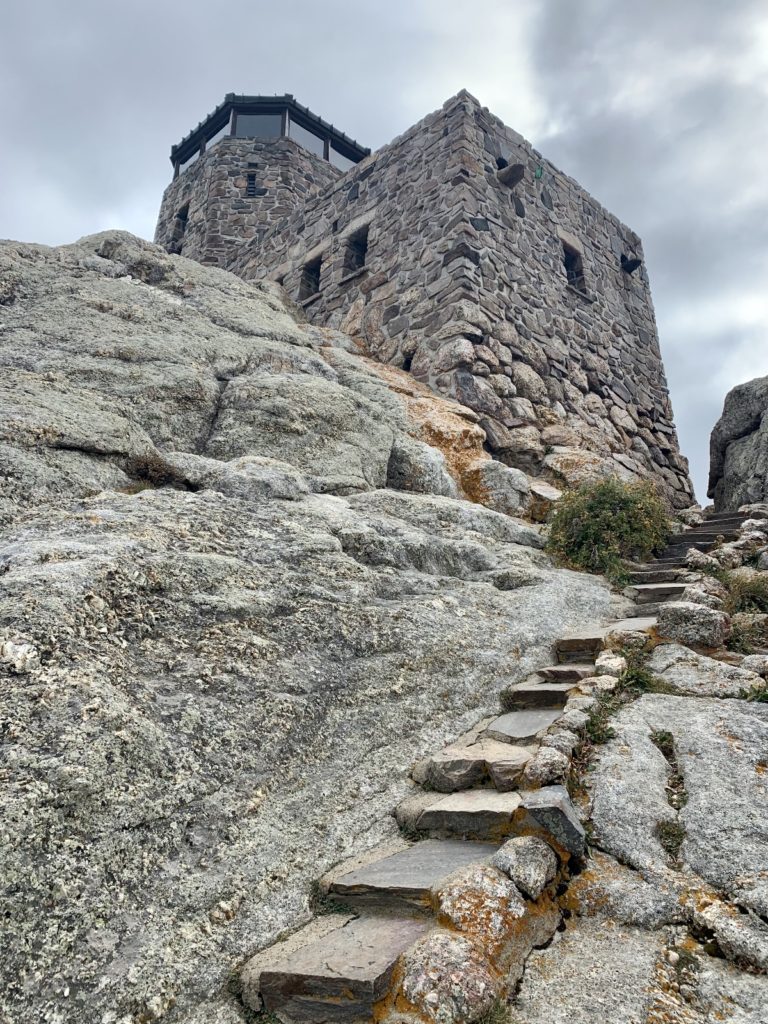
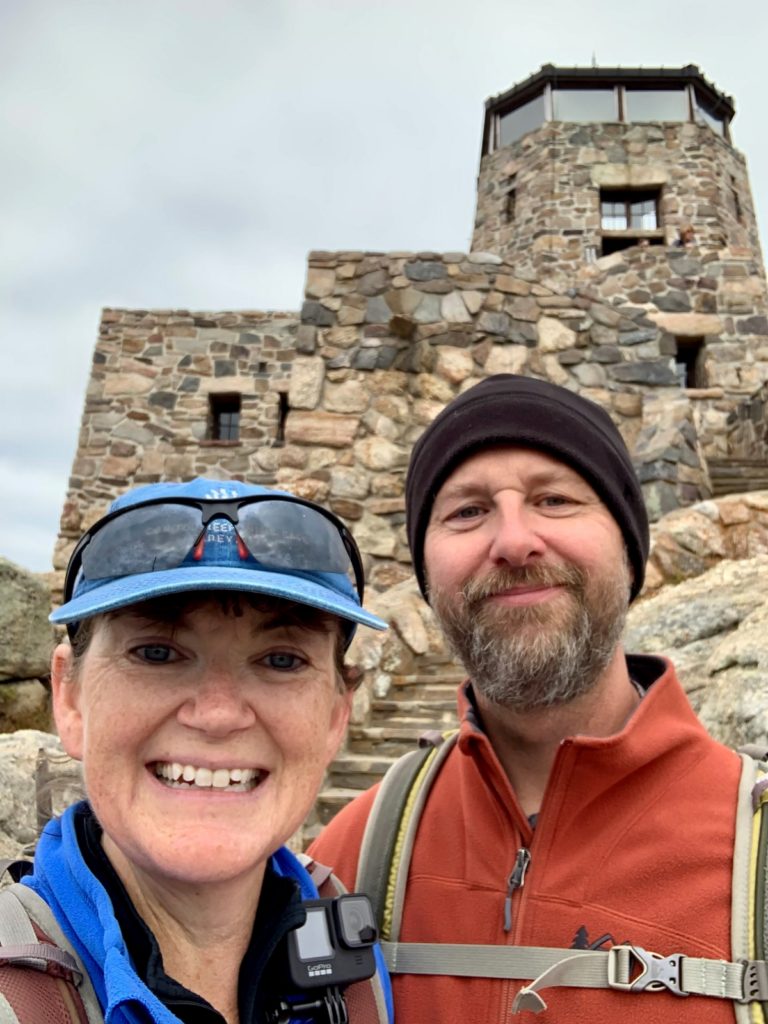
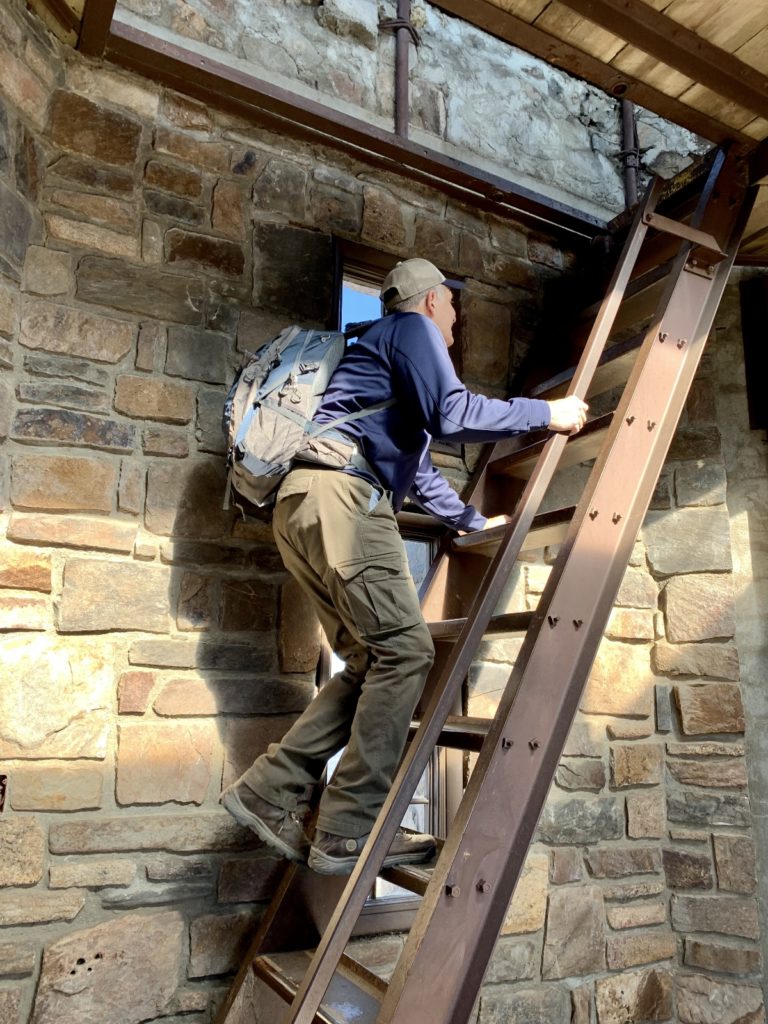
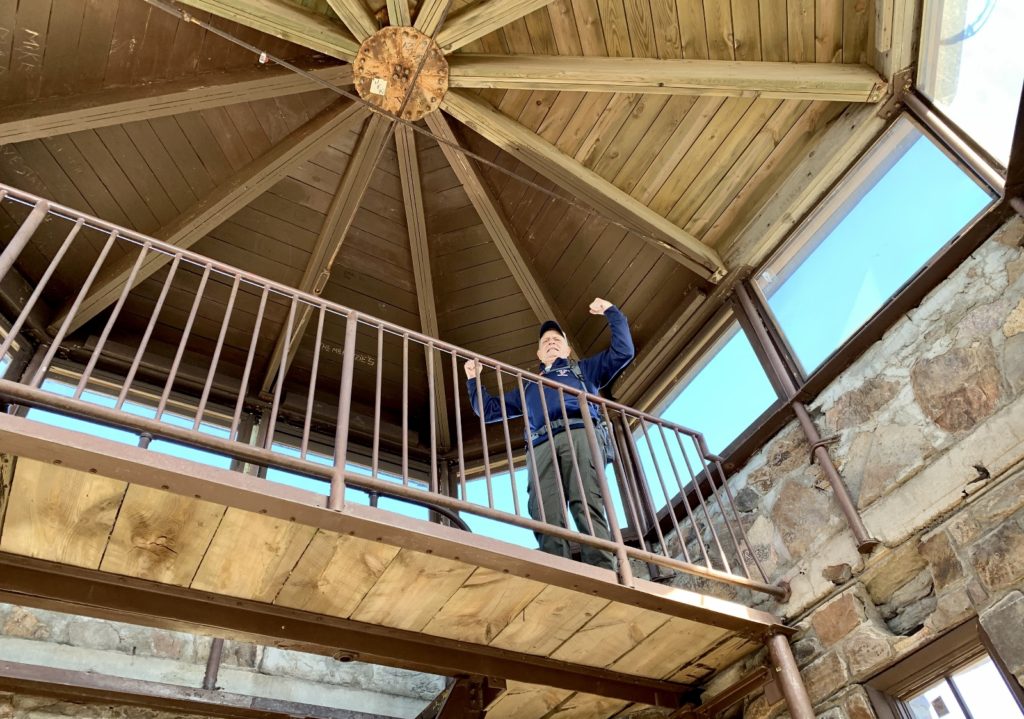
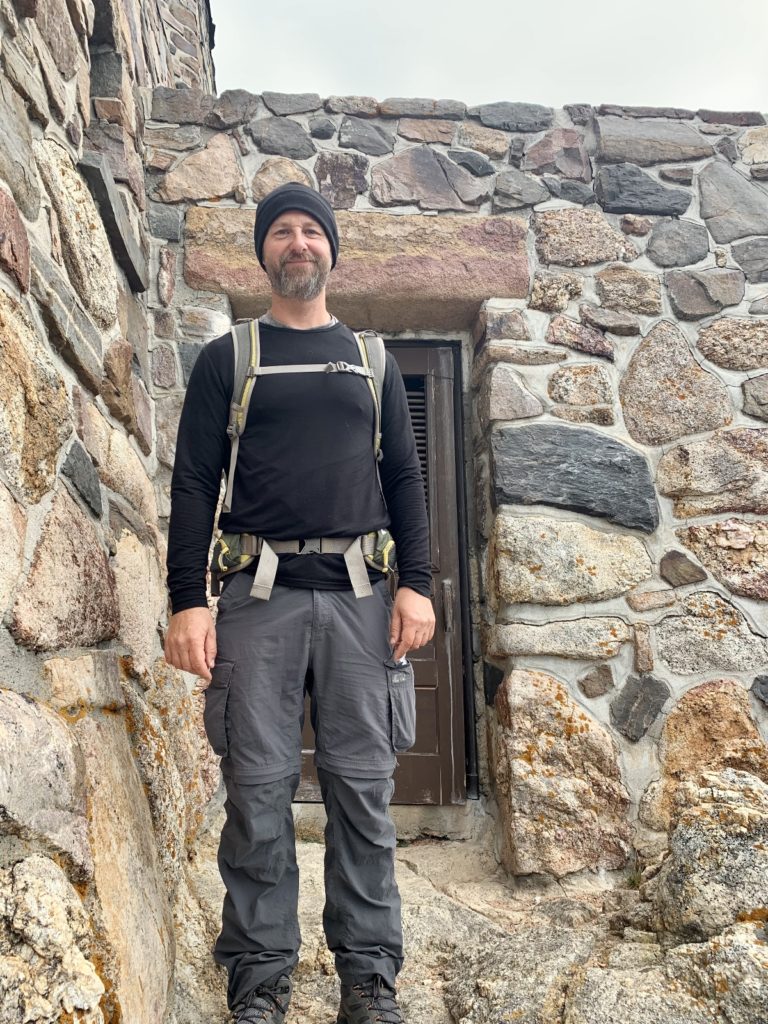
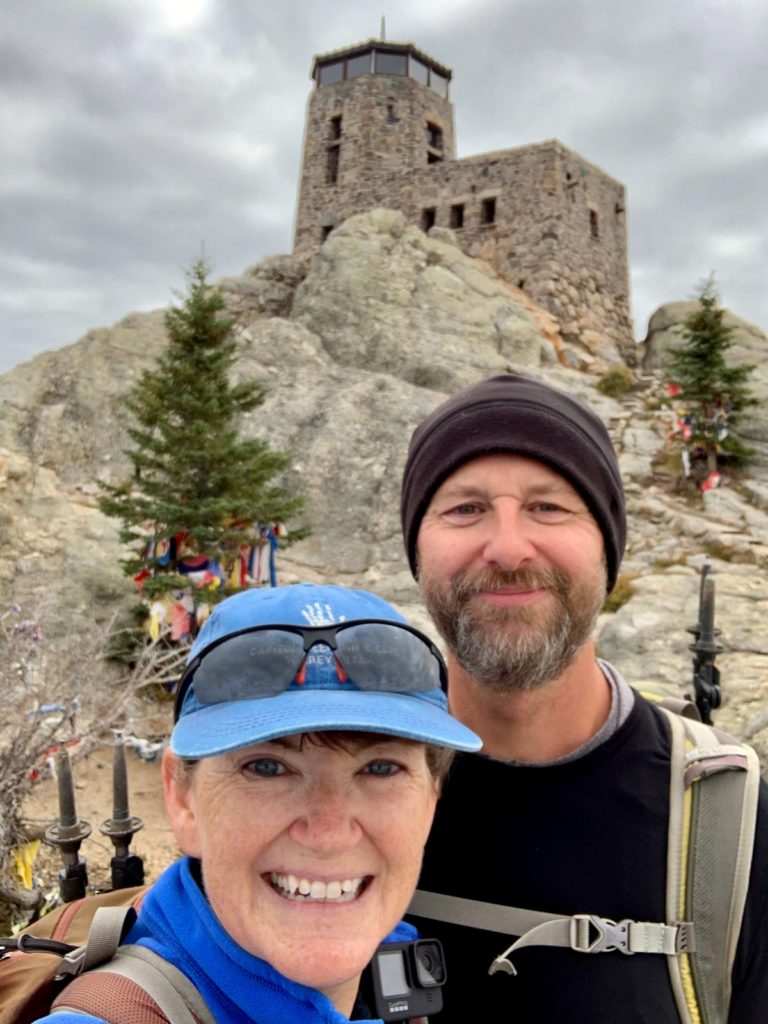
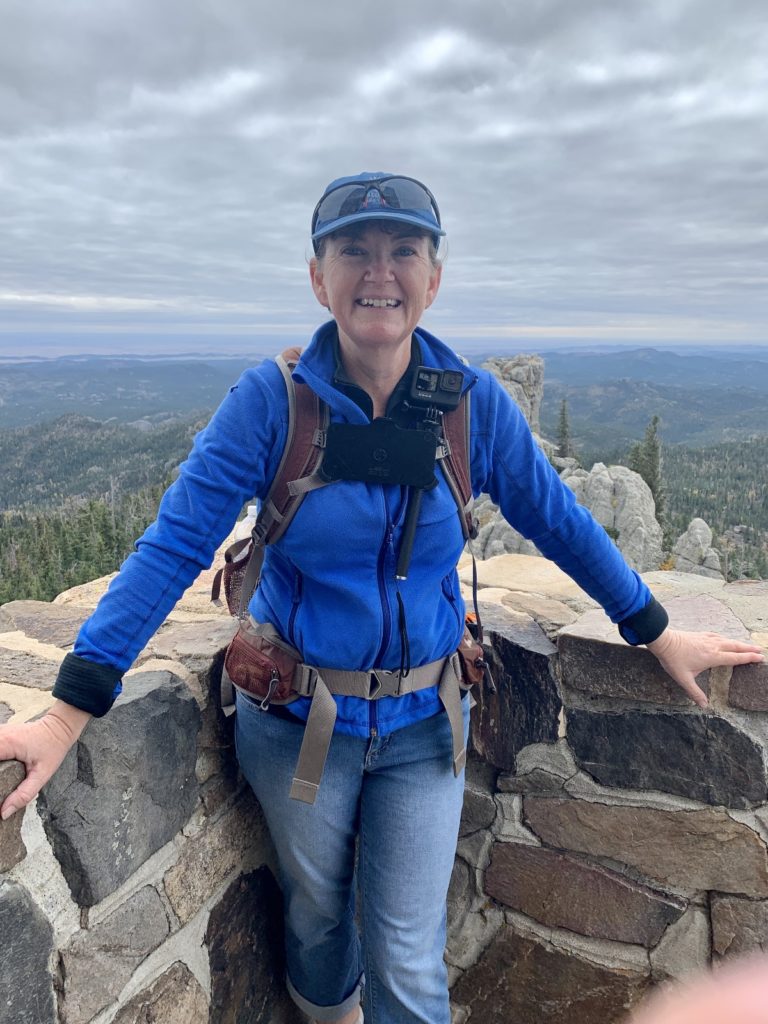

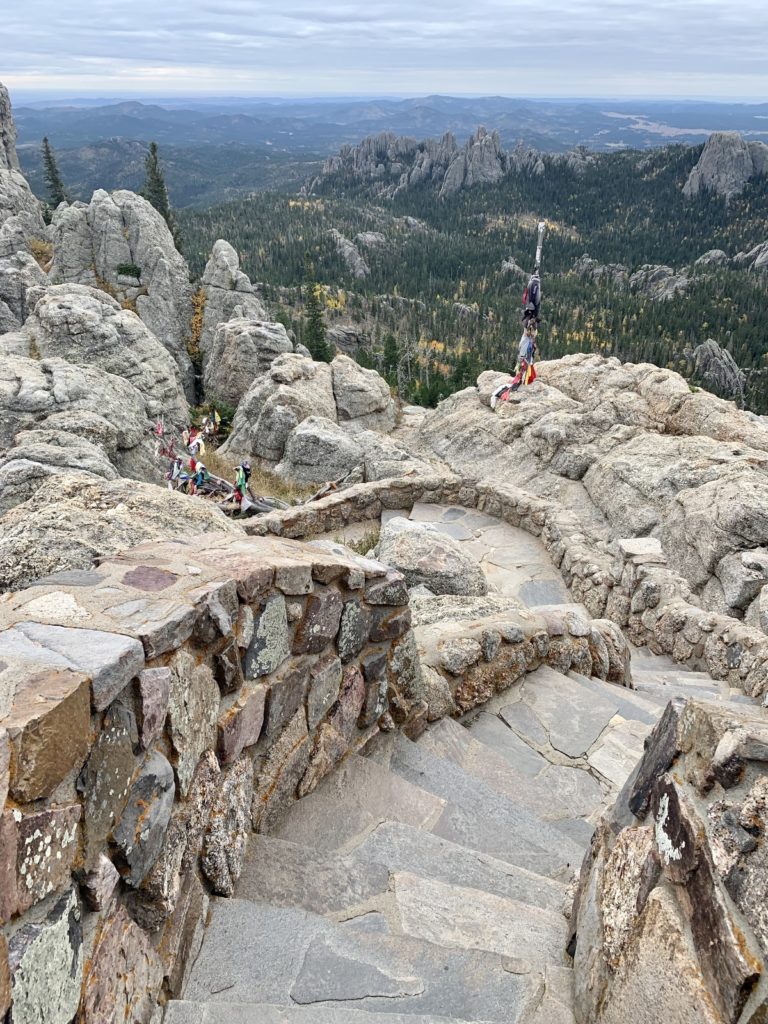
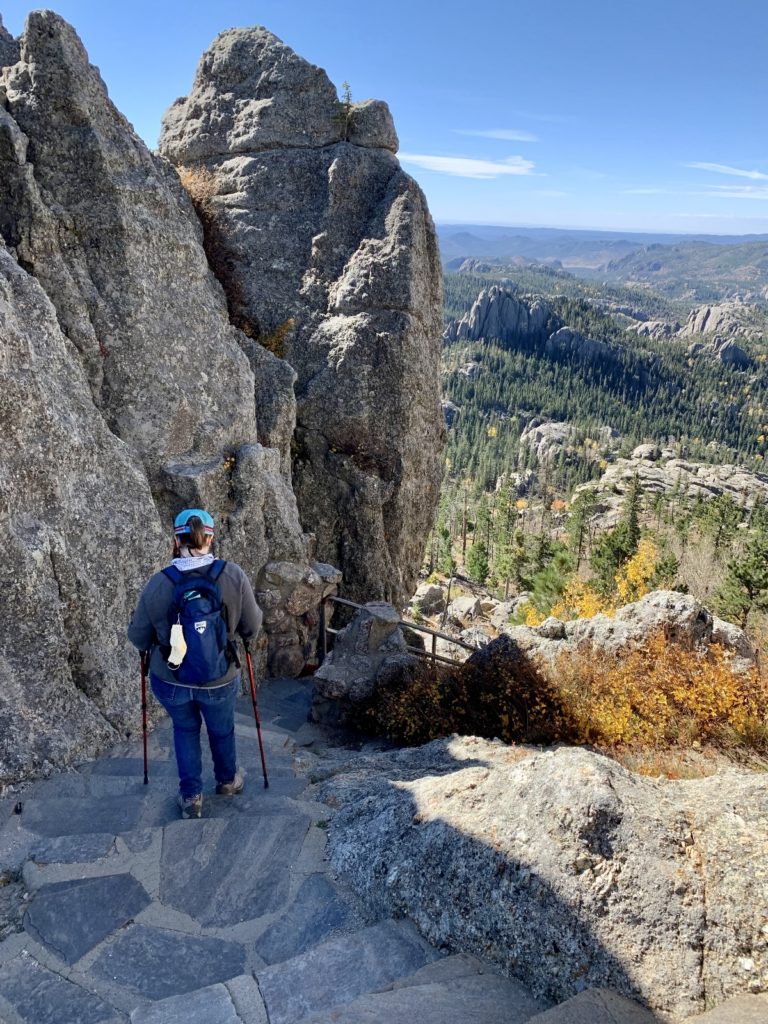
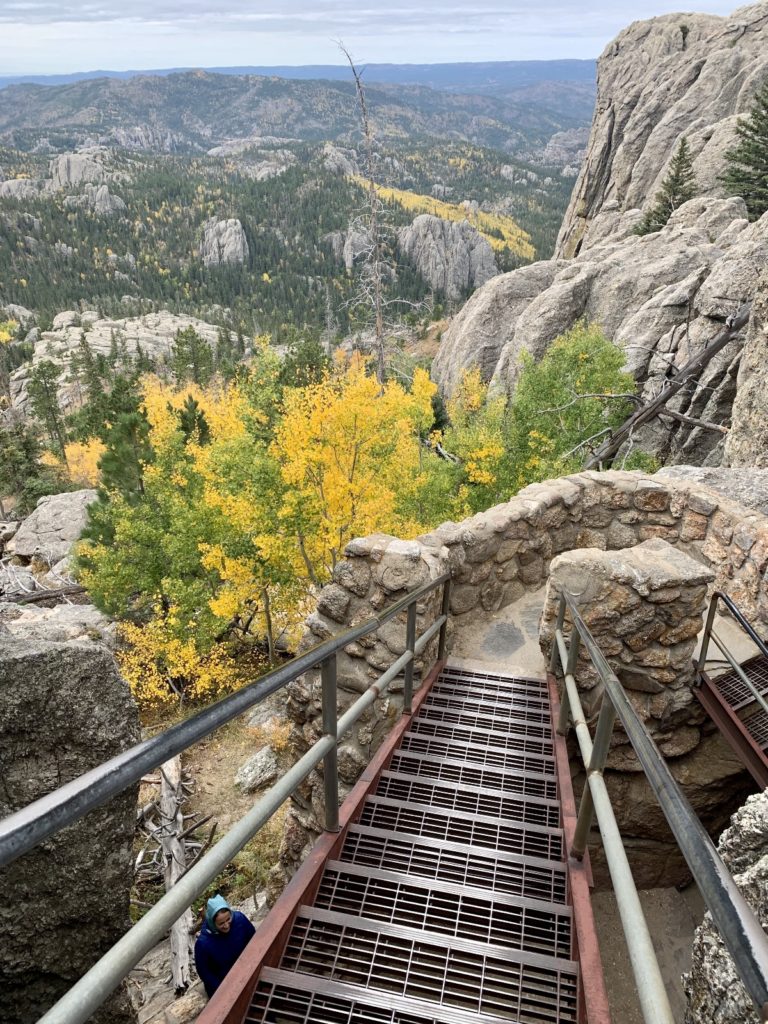
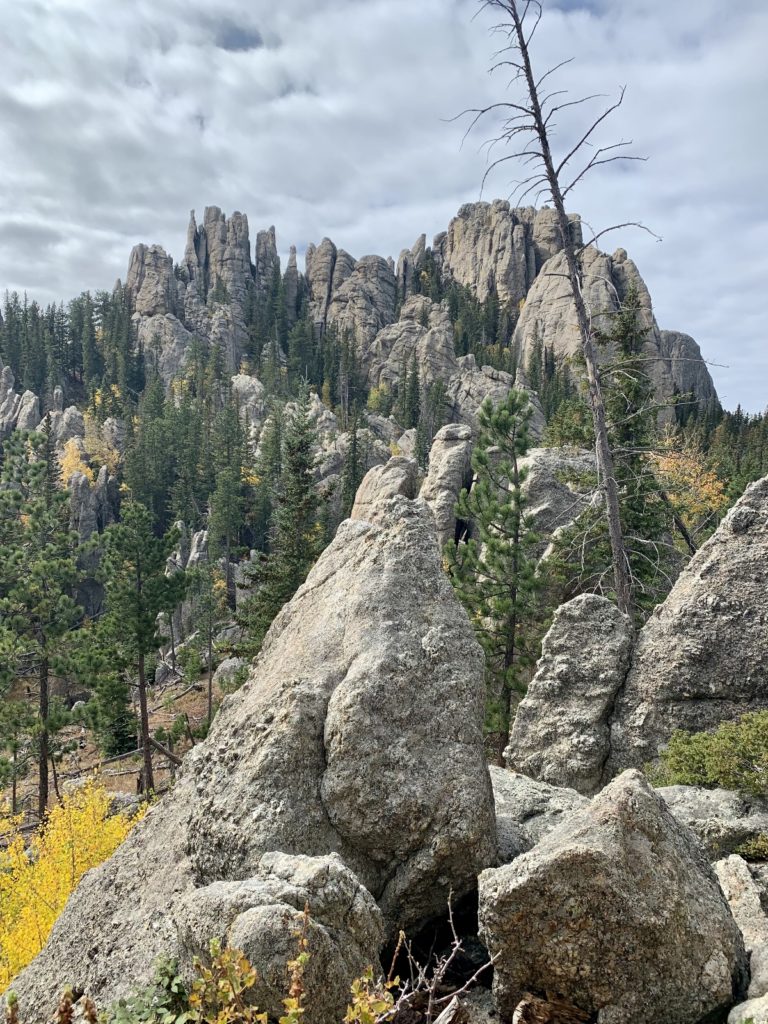
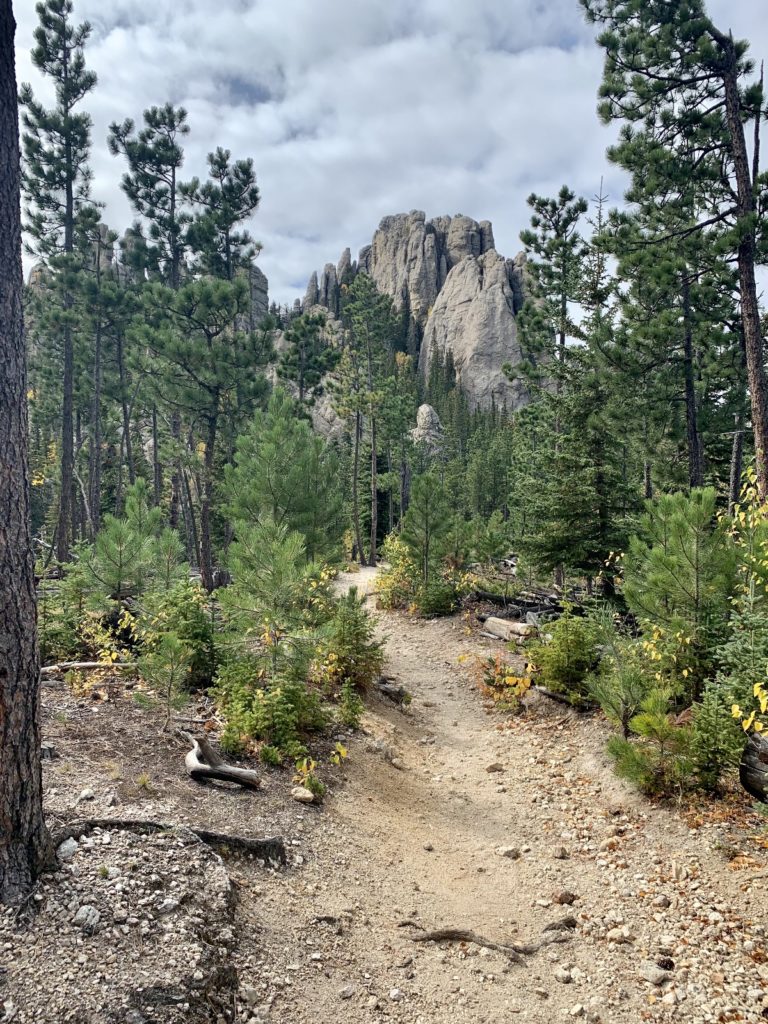
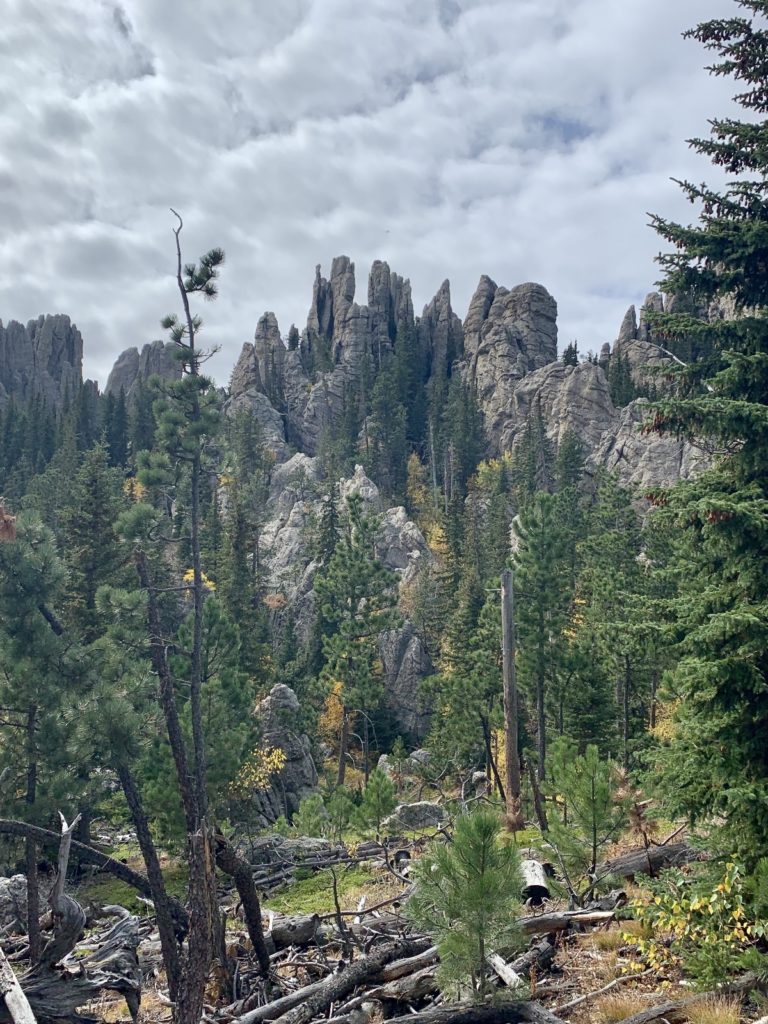
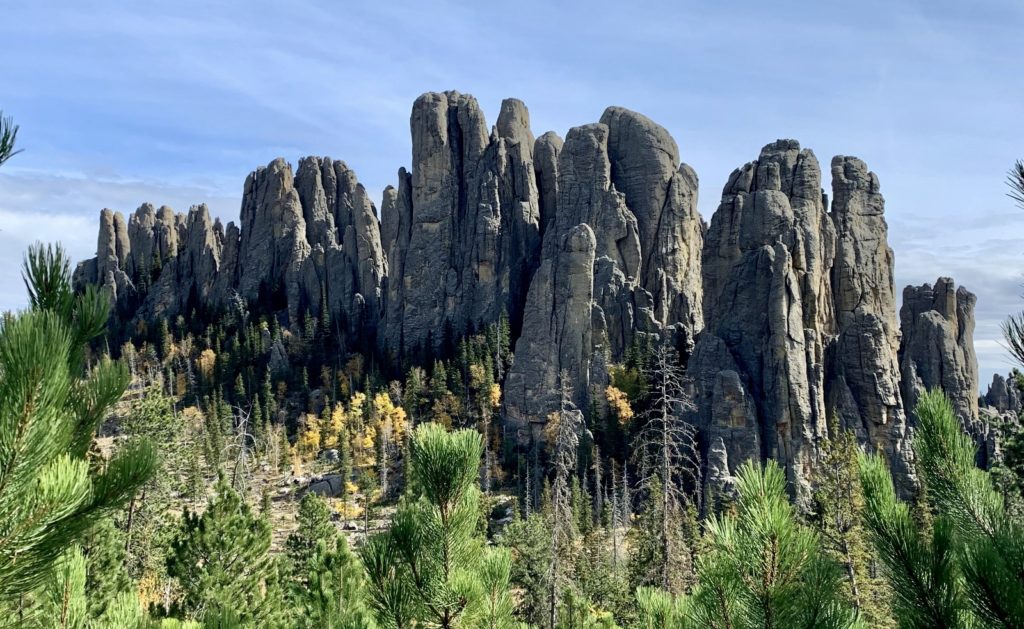
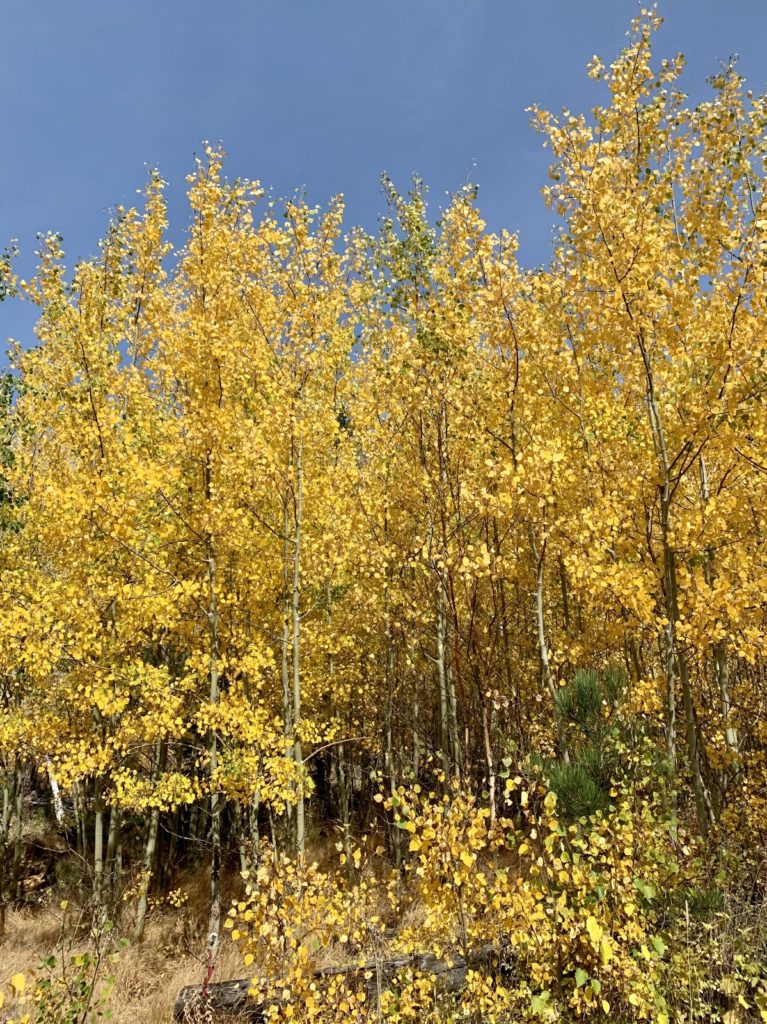
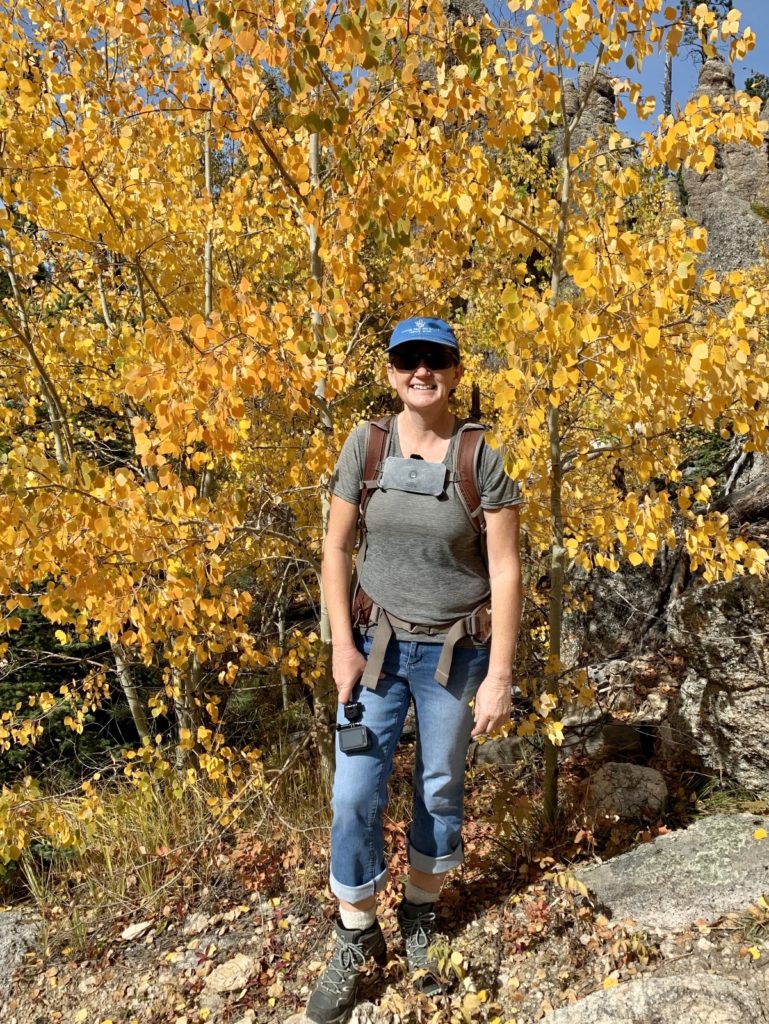
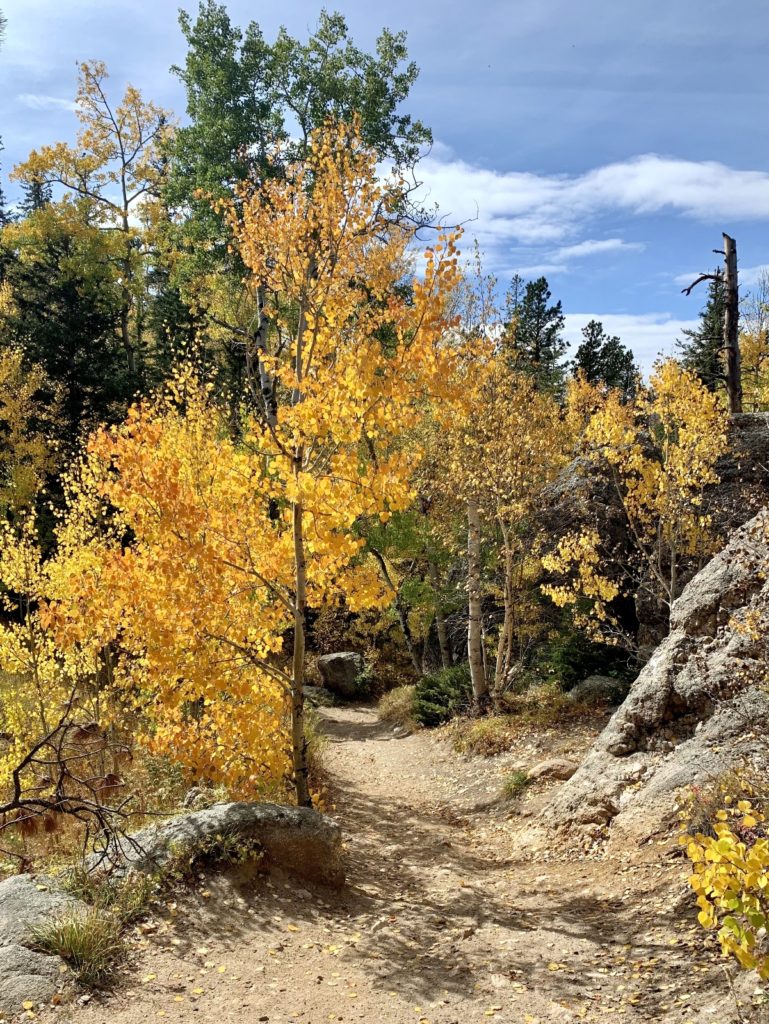
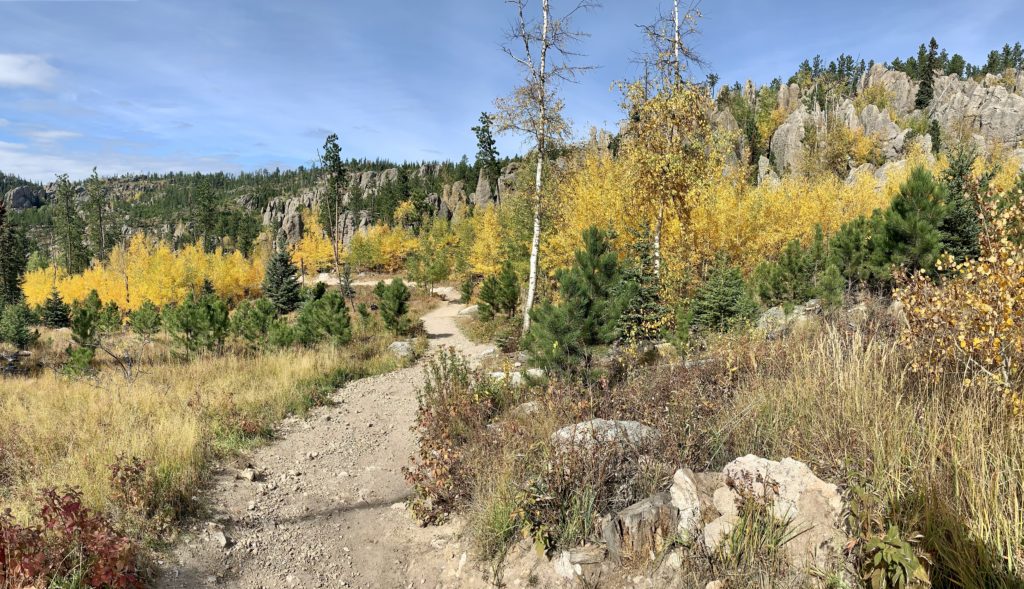
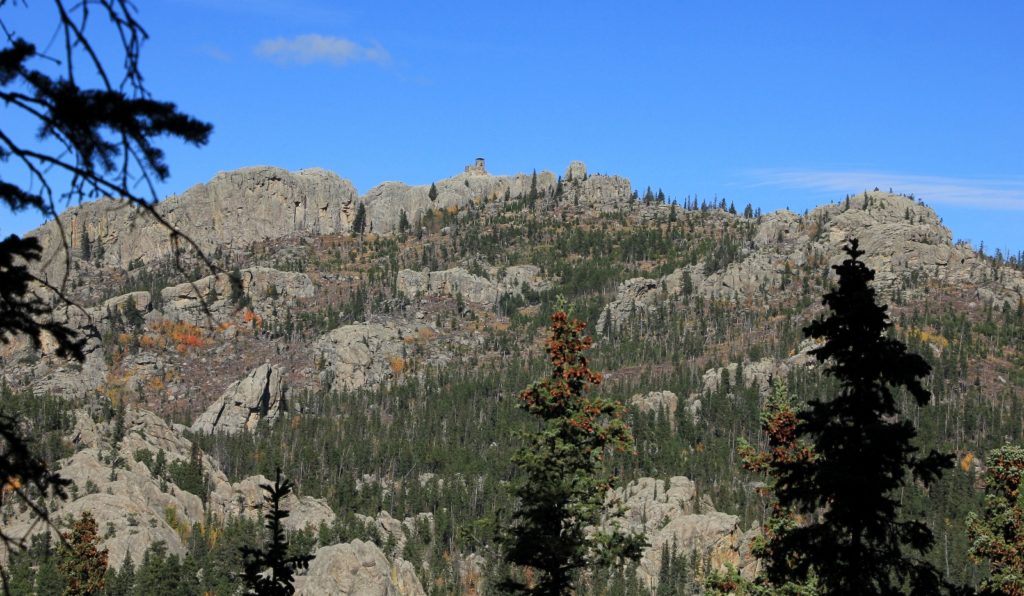
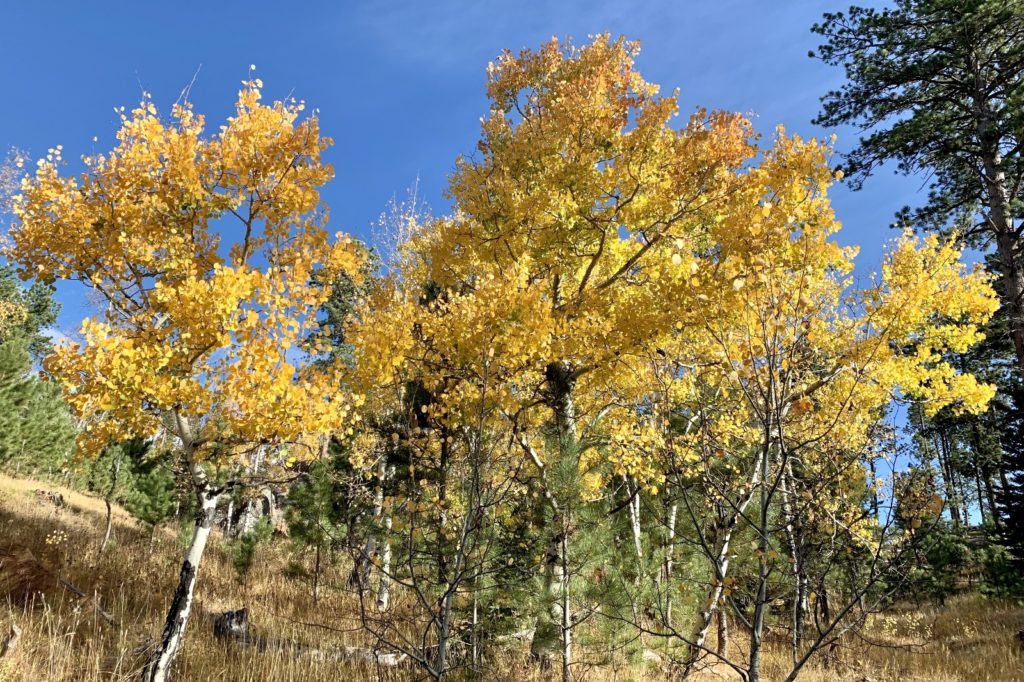
The return hike along Trail #4 was no less scenic. As we descended, we were treated to spectacular views of the Cathedral Spires and Little Devils Tower. At times, we could see views back to Black Elk Peak perched high on a ridgeline of granite spires. Even from a distance, it is a stunning view. The last mile of trail was a delight of fall colors and pockets of boulders that caught the light and sparkled in the October sun.
And so we spent two days in early October 2021 covering the same stretch of trail. I’d hike it again and again if given the opportunity. Not only did we see unmatched natural beauty, we were able to experience the specialness of this sacred place in the Black Hills.
Importance of a Name
Then I was standing on the highest mountain of them all and beneath me was the whole hoop of the world. And while I stood there I saw more than I can tell and I understood more than I saw; for I was seeing in a sacred manner the shapes of all things in the spirit, and the shape of all shapes as they must live together like one being.
Black Elk, Oglala Lakota holy man (from his first vision atop what is now Black Elk Peak)
Black Elk Peak and the surrounding Black Hills were, and still are, sacred land to the Lakota and other Plains tribes. They were originally protected within the Great Sioux Reservation established by the US government in the Treaty of Fort Laramie in 1868; however, the federal government took the Black Hills back in a new treaty in 1877, later opening them up to mining, ranching, and homesteading. Adding insult to injury, Black Elk Peak was originally named Harney Peak in 1855 by American Lieutenant Gouverneur K. Warren in honor of General William S. Harney, his commander in a regional military expedition. In September 1855, Harney’s forces attacked and destroyed a Lakota village, including women and children, in the Battle of Blue Water Creek (also known as the Harney Massacre).
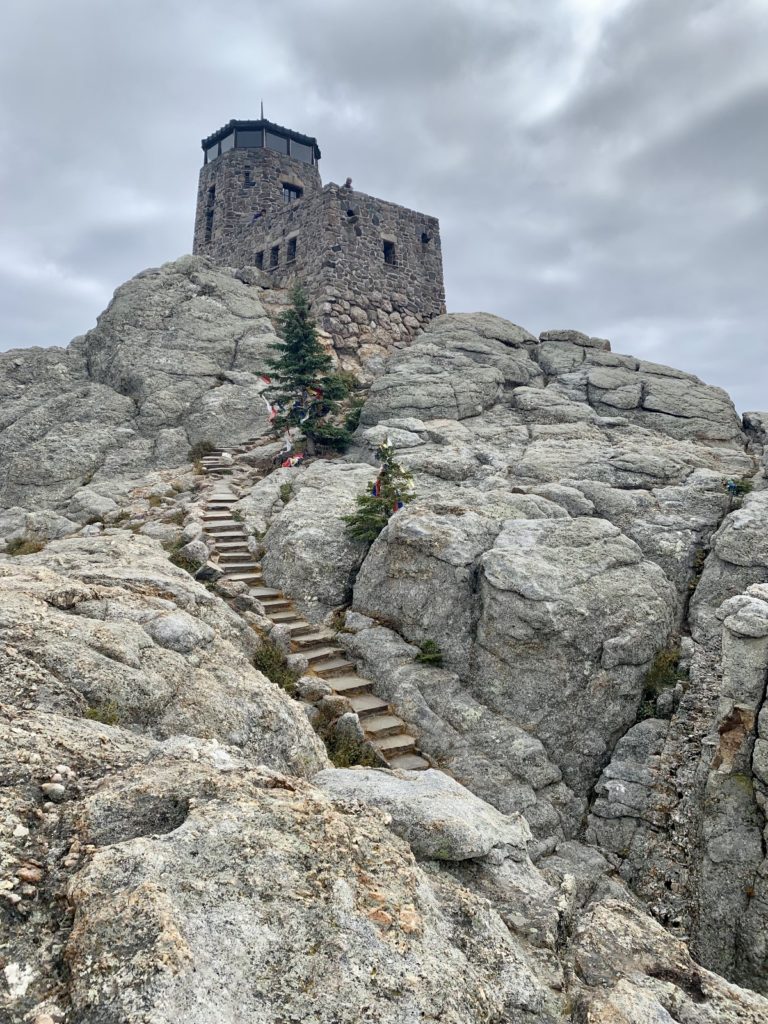
For decades, the Lakota tried to get the name of the peak officially changed. On August 11, 2016, the U.S. Board of Geographic Names officially changed the mountain’s name from Harney Peak to Black Elk Peak, after an Oglala Lakota holy man, Black Elk.
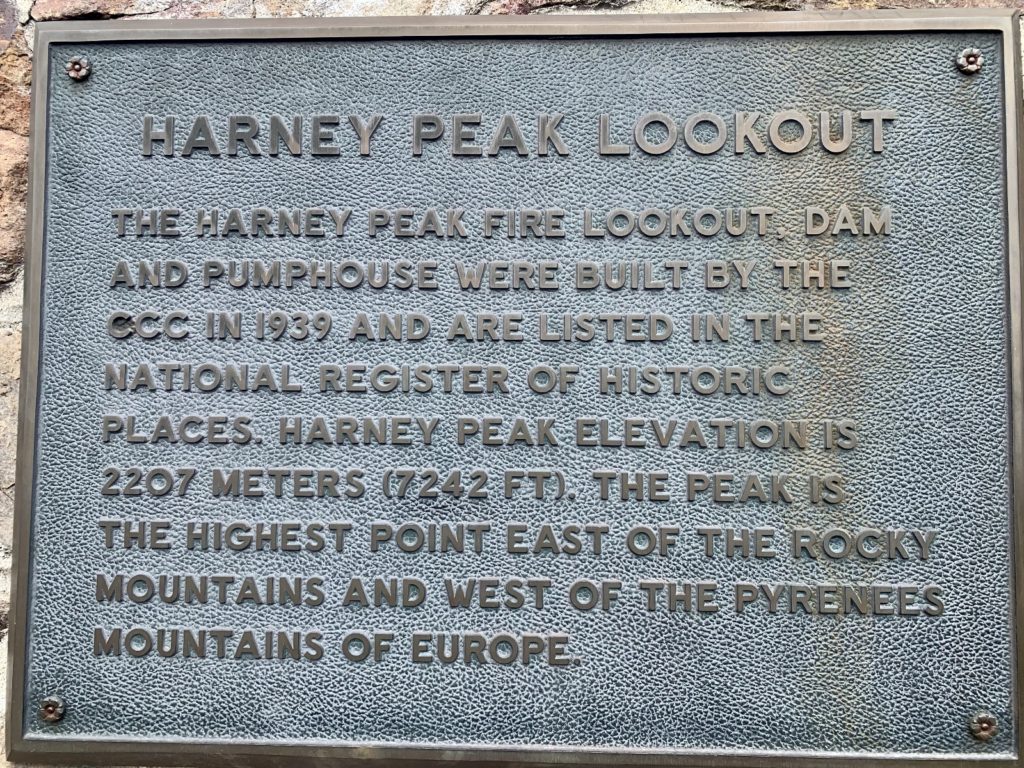
The Adventure Continues
Be sure to join us for our next post as we race to see Mount Rushmore ahead of a monster snow storm! And don’t forget to check out our Amazon RV and Adventure Gear recommendations. We only post products that we use and that meet the Evans Outdoor Adventures seal of approval. By accessing Amazon through our links and making any purchase, you get Amazon’s every day low pricing and they share a little with us. This helps us maintain this website and is much appreciated!
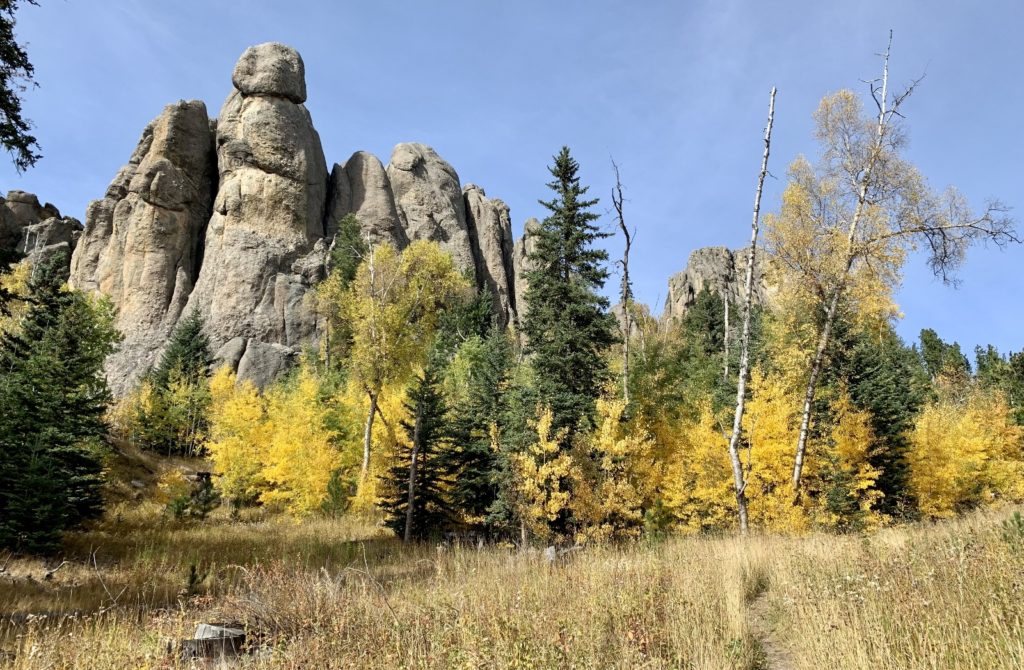
I loved all the pictures and the descriptions! <3